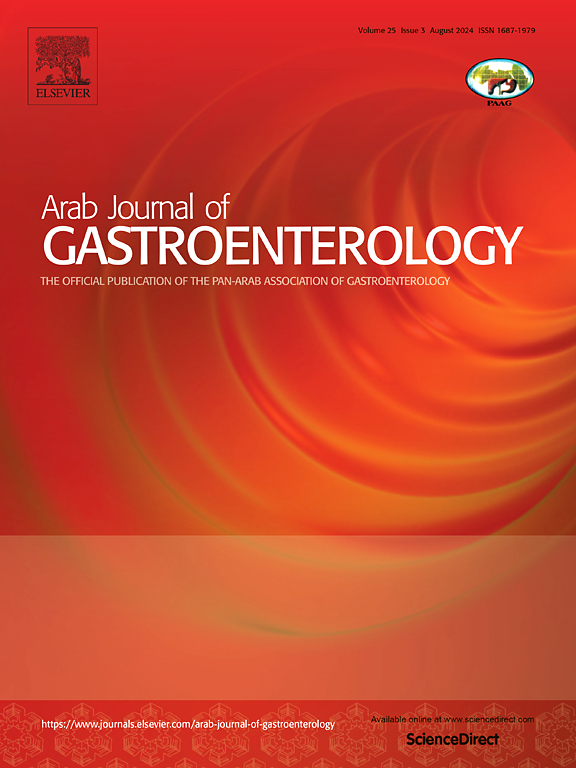PIMREG modulation of PI3K/Akt pathway enhances sorafenib resistance in Huh7 cells
IF 1.1
4区 医学
Q4 GASTROENTEROLOGY & HEPATOLOGY
引用次数: 0
Abstract
Background and study aims
Sorafenib, as a novel multi-targeted oral tumor chemotherapeutic drug, has been found to exert an impact on the inhibition of cancer growth. Phosphatidylinositol-binding reticulin assembly protein interacting with mitotic regulatory factors (PIMREG) is strongly associated with oncology to drug resistance. However, how PIMREG modulates therapy tolerance to sorafenib in HCC and its potential regulatory mechanisms remain unclear. This study is abouta mechanistic approach to examine the action and mechanism of PIMREG in HCC-mediated sorafenib resistance.
Material and methods
The human hepatocellular carcinoma sensitive cell line Huh7 and drug-resistant cell line Huh7/SFB were used for the study, and different rates of PIMREG expansion in both cells were detected. Next, the study transfected PIMREG overexpression and interference vector into hepatoma cell line Huh7/SFB, and acted on the cells with solafenib exhibiting a concentration gradient. The growth inhibition rate and IC50 value of cells were detected by MTT method to determine the concentration and time of drug addition. Then, this study employed MTT, qRT-PCR, flow cytometry, and Western blot to assay the growth of these cells, which were induced through overexpression and disruption of PIMREG, in combination with sorafenib. The study also constructed an in vivo mouse tire sample test in order to investigate the influence of PIMREG upon the in vitro efficacy of sorafenib. In addition, the study used LY294002 inhibitors to explore the molecular mechanisms of PIMREG-mediated resistance to sorafenib in Huh7/SFB cells.
Results
The expression level of PIMREG in cells of the Huh7/SFB resistant strain was clearly higher than that in cells of the sensitive strain Huh7. After transfection of sh-PIMREG, the IC50 value decreased significantly, while OE-PIMREG significantly increased the IC50 value of sorafinib. Compared with the control group, inhibition of cell proliferation by sorafenib was enhanced after interference with PIMREG, while the effect of overexpression of PIMREG was on the contrary. The efficacy of sorafenib was enhanced by knockout of PIMREG in living organisms. In addition, the PI3K/AKT signal pathway was necessary for PIMREG-induced sorafenib resistance. Subsequently, PIMREG regulated sorafenib-induced inhibition of the PI3K/AKT signaling pathway, and LY294002 blocked the signal pathway to reduce PIMREG-induced resistance.
Conclusion
All in all, an increase in HCC resistance to sorafenib via the PIMREG-mediated PI3K/AKT pathway suggests that PIMREG is a key tumor-associated gene with significant implications for sorafenib resistance in tumor cells.
PIMREG调控PI3K/Akt通路增强Huh7细胞索拉非尼耐药。
背景与研究目的:索拉非尼作为一种新型的多靶点口服肿瘤化疗药物,被发现具有抑制肿瘤生长的作用。磷脂酰肌醇结合网状蛋白组装蛋白与有丝分裂调节因子(PIMREG)相互作用与肿瘤耐药密切相关。然而,PIMREG如何调节肝癌患者对索拉非尼的治疗耐受性及其潜在的调节机制尚不清楚。本研究是关于一种机制方法来研究PIMREG在hcc介导的索拉非尼耐药中的作用和机制。材料与方法:以人肝癌敏感细胞株Huh7和耐药细胞株Huh7/SFB为研究对象,检测两种细胞中不同比例的PIMREG扩增。接下来,本研究将PIMREG过表达和干扰载体转染到肝癌细胞系Huh7/SFB中,并用索拉非尼呈浓度梯度作用于细胞。MTT法检测细胞生长抑制率和IC50值,确定药物添加浓度和时间。然后,本研究采用MTT、qRT-PCR、流式细胞术和Western blot检测这些细胞的生长情况,这些细胞是通过过表达和破坏PIMREG,联合索拉非尼诱导的。为了研究PIMREG对索拉非尼体外药效的影响,本研究还构建了小鼠体内轮胎样品试验。此外,本研究利用LY294002抑制剂探讨了pimreg介导的Huh7/SFB细胞对索拉非尼耐药的分子机制。结果:PIMREG在Huh7/SFB耐药菌株细胞中的表达水平明显高于敏感菌株Huh7细胞。转染sh-PIMREG后,IC50值显著降低,而转染e - pimreg后,索拉非尼的IC50值显著升高。与对照组相比,干扰PIMREG后索拉非尼对细胞增殖的抑制作用增强,而过表达PIMREG的作用则相反。索拉非尼的疗效是通过敲除生物体中的PIMREG而增强的。此外,PI3K/AKT信号通路对于pimreg诱导的索拉非尼耐药是必需的。随后,PIMREG调节sorafenib诱导的PI3K/AKT信号通路抑制,LY294002阻断信号通路以降低PIMREG诱导的耐药。结论:总而言之,通过PIMREG介导的PI3K/AKT通路,HCC对索拉非尼的耐药增加表明PIMREG是肿瘤细胞中关键的肿瘤相关基因,对索拉非尼耐药有重要影响。
本文章由计算机程序翻译,如有差异,请以英文原文为准。
求助全文
约1分钟内获得全文
求助全文
来源期刊

Arab Journal of Gastroenterology
Medicine-Gastroenterology
CiteScore
2.70
自引率
0.00%
发文量
52
期刊介绍:
Arab Journal of Gastroenterology (AJG) publishes different studies related to the digestive system. It aims to be the foremost scientific peer reviewed journal encompassing diverse studies related to the digestive system and its disorders, and serving the Pan-Arab and wider community working on gastrointestinal disorders.
 求助内容:
求助内容: 应助结果提醒方式:
应助结果提醒方式:


